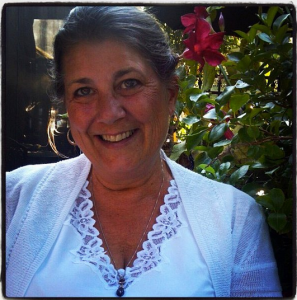Today’s guest post is by Allen Mireles.
We went home to Vermont for the holidays this year.
The morning after Christmas, some of the family sat around in my brother’s living room, chatting idly and sipping coffee.
I looked at my mom, sitting across from me on the couch next to my brother, absorbed in reading something on her iPad.
My mother, a youthful 76, has only just retired and lives quietly and happily in the mountains.
She has never been particularly enthralled with electronics or social media.
I was amused to see her using her iPad with such ease.
Then she mentioned her interest in joining Twitter.
Wait. What? I was dumbfounded. Speechless for a moment (something that happens infrequently).
I asked her to repeat what she had just said and then asked her why. She answered that she kept hearing her friends talk about Twitter and thought she might be able to get information on weather emergencies and things like that.
My mom is thinking about joining Twitter. How far we have come in just five short years.
The Backstory
Twitter is an online microblogging service that enables its users to send and read text-based messages of up to 140 characters, called “tweets.” In 2012, 340 million tweets were shared daily. Seventy-five percent of the world’s heads of state are on Twitter, according to a survey released by the Digital Policy Council.
My mom on Twitter? I am all about people of every age embracing social media. Yet I struggle to imagine a world where my mom could confine her communications, written or spoken, to 140 characters. A trait I share. Ask anyone.
I joined Twitter on December 18, 2007. At that point in time it had about 500K users. I remember setting up my account, tentatively sending out my first inane tweet, then running away from it altogether. I didn’t understand how to use it, why I would want it or with whom I would communicate.
And yet, I was intrigued. I wanted to learn how to use it. I went back to it and fell down the Twitter rabbit hole. I became a Twitter fiend, spending countless hours tweeting, reading, and sharing other people’s tweets. I lurked for several years, reading and re-sharing the content of others but not creating my own.
Twitter Love
Twitter became a community and a place to learn. I read everything I could get my hands on and tried every new tool I stumbled across. I made new friends around the globe and found work through Twitter. I read about editors who wanted to be pitched stories in 140 characters or less. I showed clients how to incorporate Twitter into their marketing and public relations programs.
I was almost ridiculous in my enthusiasm and bored family, friends, and colleagues to tears with my endless chatter about its benefits.
Somehow, along the way, I settled on TweetDeck as the Twitter management tool that made the most sense to me. It allowed me to dip in and out of the Twitter conversations and comment with ease and to stay abreast of the information shared by people who I respected.
At a glance I could see who was talking about what and decide if I wanted to join the conversation. It was wonderful.
Change Bites
Then Twitter purchased TweetDeck. And updated it. Changing it from the tool I loved and used daily to something I hardly recognize and heartily dislike. The search for a replacement has been time consuming and frustrating. Hootsuite, an elegant solution, offers wonderful features but the columns are just too wide. I can’t enjoy the ability to dip in and suss things out at a glance anymore.
With Hootsuite I have to open the program, scroll through the fat columns and it takes too much time. Time I don’t have these days. So I find myself having fewer conversations on Twitter.
I’ll have to retrain myself. I can do this. I can learn to find the utility in Hootsuite and quit whining about it.
After all, if my mom can even think about joining Twitter, I can train myself to use a new Twitter management tool, right?
Right. Grrrrr… tell me, what do you use? Do you love it? Hate it? Why?
Oh, and about my mom and Twitter. Turns out she really only wanted to be able to read Rachel Maddow’s updates and was delighted to find out she could do that without having to learn to use Twitter after all.
Allen Mireles is vice president at Arment Dietrich and is based outside of Toledo. She has diverse expertise in healthcare IT, manufacturing, and education. You can follow her on Twitter at allenmireles, add her to your circles on G+, link to her on LinkedIn, or friend her on Facebook.
